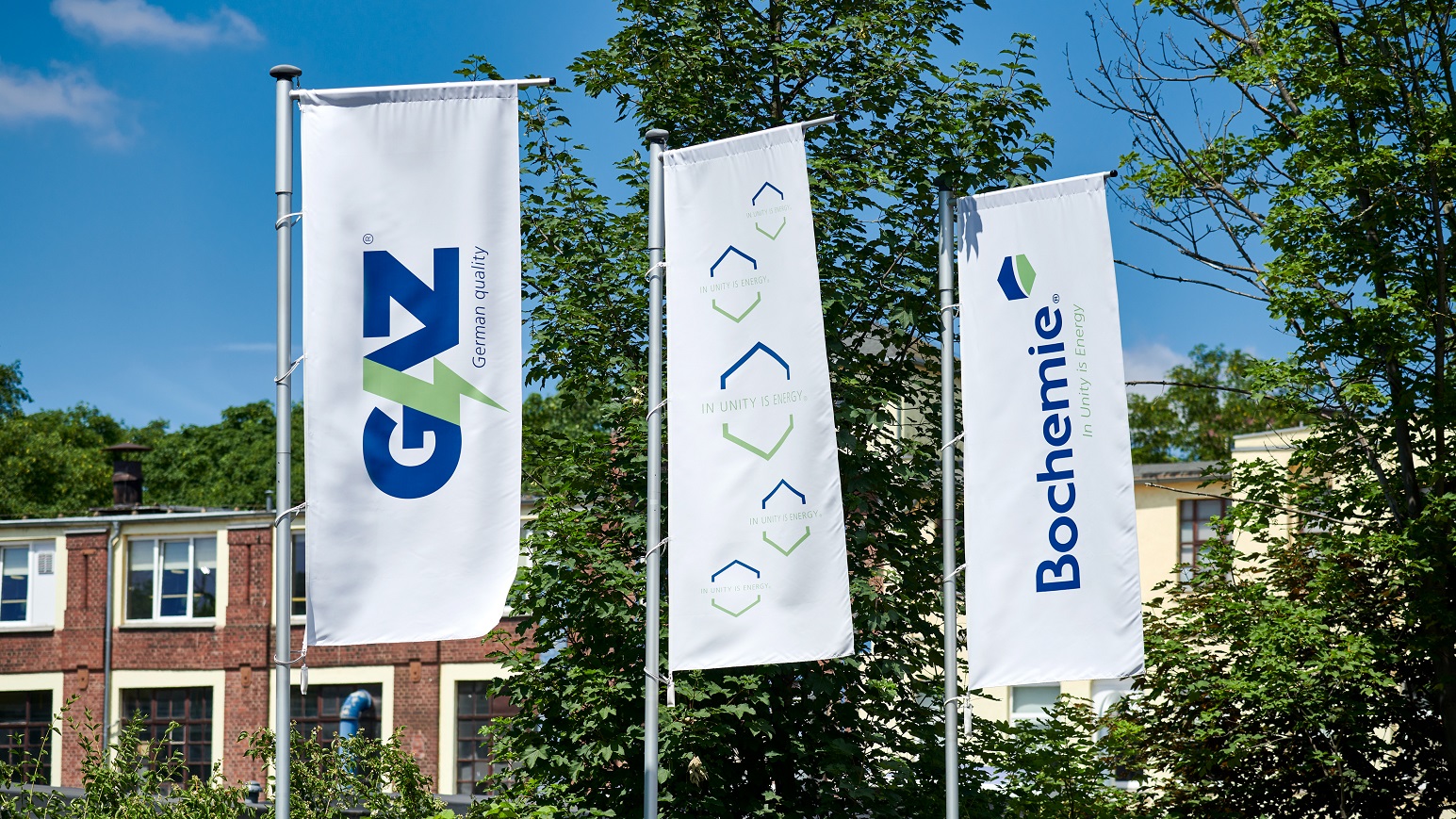Coming Back Stronger. The History of GAZ part IV
History
November 21. 2024
2 min.
Within the East German economy, GAZ was well established as a major supplier of key technologies. But now it’s 1990 and the GDR is gone. Will GAZ survive the transition to market economy?

In the last installment of our series about the history of GAZ, we left in the late 1980s. In 1984, the company celebrated the 100th anniversary of the founding of its predecessor, Friemann & Wolf, once a major manufacturer of miners’ lamps, or Grubenlampen in German. In the past decades, however, the company turned its focus away from mining equipment, becoming the GDR’s main supplier of batteries, particularly those used in cars.
So, GLZ was renamed Grubenlampen- und Akkumulatorenwerk Zwickau, or GAZ. (Which was only the second last change of our name, as nowadays, the G in GAZ stands for Geräte, or machinery.) Following a major expansion and modernization of the facility, some 80 percent of the company’s produce were lead-acid car batteries, a tenth Ni-Cd cells, and the rest was industrial lighting. In 1989, the factory produced 1.2 million lead-acid batteries alone and counted almost two thousand employees.
A difficult rebirth
That was when the wall between both Germanies fell, the GDR disintegrated, and market economy swept over the 'worker’s paradise.' Eastbound supply chains were sewered, and GAZ’ primary customers, East German car manufacturers, struggled with restructure and a sharply falling demand for their Trabants and Wartburgs. Therefore in 1991, the output of lead-acid batteries had been halved to 600 thousand units.
At that point, however, some important modernization efforts such as the introduction of computers were already completed, and representatives of western companies started courting GAZ. First, a know-how agreement with VARTA was signed, while GAZ was turned into a private company under the patronage of Treuhandanstalt, a public agency tasked with privatizing East German enterprises. GAZ was split according to its main fields of production, while in 1990 alone, almost 700 of the pre-restructure staff lost their jobs.
What is GAZ today, or the Ni-Cd production unit of the pre-1990 company, was fully released into the wilderness of capitalism, i.e. from the auspices of Treuhandanstalt, in October 1992. It kept the historic buildings in Reichenbacher Straße, and survived on supplying the now reunited Federal German railways as well as ex-GDR rolling stock manufacturers with Ni-Cd batteries. There was even an attempt at reviving the production of miners’ lamps, the last of which was shipped in 2009, after 125 years in the industrial lighting business.
Since the dawn of the new millennium, GAZ again modernized its production facilities and gradually introduced a whole new line of state-of-the-art Ni-Cd cells including the unique lomain range of batteries. In 2005, GAZ became part of EnerSys, a leading provider of industrial energy storage solutions, as a result of which GAZ entered the aerospace or the Oil and Gas markets. Other customers included suppliers of technologies for energy generation and distribution, while in 2013, the SOL G range of batteries optimized for usage along with renewables was introduced.
A new era begins
In 2019, the last major milestone of GAZ’ history came when it was acquired by Bochemie, a Czech chemicals and electrical engineering company. Both parties already had a fruitful relationship, as Bochemie supplied GAZ with active material for their Ni-Cd cells for many years. In fact, the Czechs have been preparing these basic components of batteries for more than seven decades, and the acquisition of GAZ was a key stepping stone along the path to establishing Bochemie Group as a global supplier of comprehensive battery storage solutions.
From then on, the ball truly started rolling. A US subsidiary was established while GAZ opened another manufacturing site in Dammam, Saudi Arabia, in order to more effectively supply important customers in the Middle East, including household names such as Saudi Aramco. But most importantly, together with Bochemie, GAZ entered a new realm of battery technology by introducing a whole line of industrial storages based upon Li-ion (LFP) cells.
In sum, GAZ almost ceased to exist during the transition from planned to market economy in the early 1990s. Which, by the way, did not happen for the first time in the company’s 140-year long and truly colorful history. But just as it did following both World Wars, GAZ rose again, eventually becoming stronger and better positioned than before. And now, together with Bochemie, GAZ is opening a whole new and very promising chapter of its story.
Related articles
Powering the Workers' Paradise. History of GAZ part III
July 11. 2024
2 min.
MoreFrom Now on Electric. The History of GAZ part II
March 29. 2024
2 min.
MoreBringing Light into Darkness. The History of GAZ part I
January 3. 2024
2 min.
More



